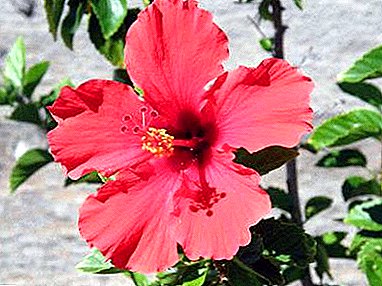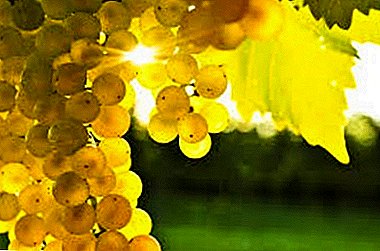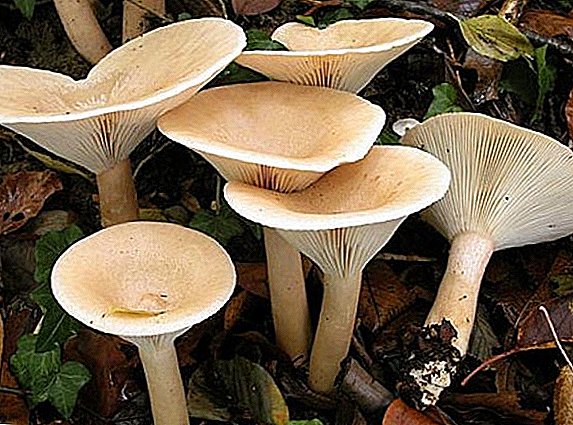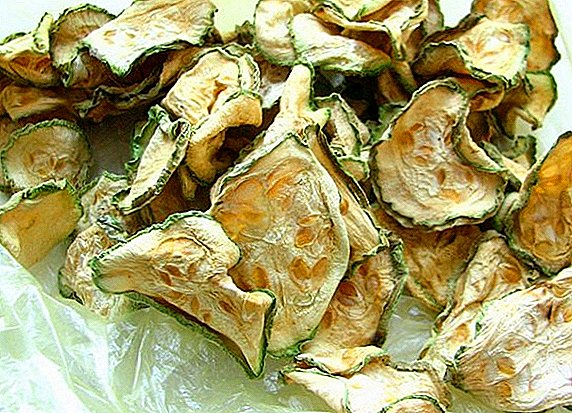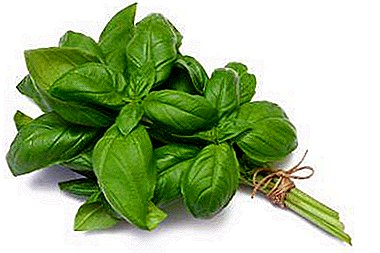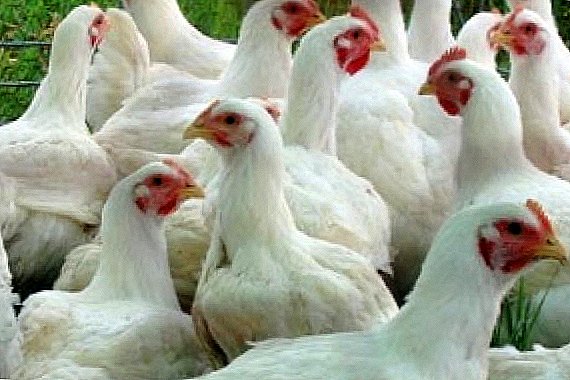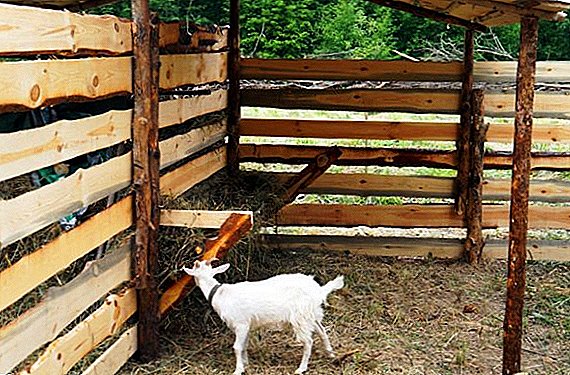
White gerbera is a magnificent sample of a flower, the very nature of which is intended for creating flower arrangements. It is suitable for almost any bouquet - from the pompous aristocratic to the most modest. Until recently, it was used mainly as a "industrial" flower for flower arrangements, however, at present, the gerbera has become attractive for amateur growers.
Gerbera is the fifth most popular flower for bouquets, after roses, carnations, chrysanthemums and tulips. Another name for this wonderful flower is “Transvaal daisy”, from the name of the Transvaal locality in South Africa, where it was discovered.
Botanical description and history
Gerbera belongs to the aster family, and is similar at the same time to aster, and chamomile, and even to a small sunflower. It received its name by the name of the prominent German physician and biologist Traugott Gerber. The white beauty of Europeans became widely known after expeditions to the wilds of South Africa, the subtropical forests of Madagascar, only in the late 19th and early 20th centuries.
The flower of the "transvaal daisy" is a complex inflorescence, (otherwise referred to as a "basket"). The diameter of the inflorescence is from 4 to 30 centimeters.
Such a "basket" consists of:
- very delicate white flowers on the edge of the inflorescence;
- middle flowers, which are tiny yellow tubes.
In total, the “basket” can include up to 100 individual colors. The leaves of the white gerbera are graceful, dark green in color, with serrated leaf depressions along the edges, up to 30 centimeters long, sometimes covered with a whitish fuzz. The height of the stems - up to 60 centimeters. Rhizome well developed.
Gerbera is a perennial plant. Currently, thanks to the work of breeders, about 70 varieties of the white gerbera have already been bred.
Appearance and features
White gerbera is amazingly similar to daisy. The peduncle of the guest from the subtropics is always solitary; it is surrounded by leaves and attached to the shoots. "Transvaal Chamomile" - thermophilic flower, so growing it in our conditions in the open field is not recommended (if you want to find out how the gerbera is still grown in the garden, read this article).
Although the gerbera loves sunlight, it is advisable to hide it in the shade at noon in summer. Interestingly, the flowering time of the plant is 12 hours. If there is too much sunlight, and also if there is an excess of it, you can not wait for flowers at all (for more information about why gerberas can not bloom and how to care for them in this case, you can find out here).
A photo
Below you will see a photo of a white gerbera:





Where and how to plant it?
As noted above, the cultivation of white gerbera in the open field is difficult. In central Russia, "Transvaal daisies" must be dug up before the onset of cold weather. It is recommended to grow this variety of plants in greenhouses or at home.
Lighting and location
Gerbera - "sissy" and is afraid of drafts and strong winds. If you still decide to plant it in the open field, the best location would be a place near the dead fence or the wall of the building with maximum insolation.
It is recommended to plant the plant in a small hole, but only so that it does not accumulate water, it will be disastrous for gerberas. It is recommended to place a gerbera in a house in a flowerpot in a quiet and bright place (how to care for a gerbera in a pot, read here). Best of all for this whimsical plant is a window sill facing the southeast. Also, flower growers are advised to place a gerbera pot in a pallet with sphagnum moss, gravel or expanded clay.
Soil requirements
Gerbera prefers loosened soil through which fresh air flows easily. To prepare the substrate, you will need to mix in equal proportions:
- peat;
- fine sand;
- leaf turf
In principle, a postal mixture for roses, widely represented in distribution networks, is also suitable for gerberas.
Humus and compost are very harmful to gerbera roots. Avoid adding these ingredients to the soil.
Care and common diseases and pests
 Common diseases and pests "Transvaal daisy" - a tender plant. As already noted, she does not like drafts and excessively bright sunlight.
Common diseases and pests "Transvaal daisy" - a tender plant. As already noted, she does not like drafts and excessively bright sunlight.
With extreme caution should be approached to watering. Drops of water should not fall on the leaves and basal rosette (for the same reason, the plant does not like spraying), the amount of water should be small so that in no case does it stand in the basal layer of the earth. For watering, only softened, slightly warmed water is suitable.
The air that the white beauty "breathes" should be well humidified, with a temperature of 20-22 degrees Celsius. Also, seriously, it is necessary to approach the application to the soil fertilizing:
- fertilizer complexes with high nitrogen levels must be applied from late winter to mid spring;
- complexes enriched with potassium, suitable for the flowering period, which by the way, falls in the period from August to November.
A few words about the diseases and pests of gerbera affecting the plant. These include:
- Mealy dew. External symptom - plaque on the upper part of the leaves of the diseased plant, their darkening.
- Fusarium and verticillus. In the presence of such a disease, the rhizome and base of peduncles are painted in an intense brown color.
- Phytophthora. Its symptoms are sweaty pigmentation on all parts of the gerbera, stalk rotting.
- Gray rot. Leaves and shoots are covered with a gray bloom.
It is possible to prevent infection with these diseases by regularly airing the room where the plant lives. But beware of drafts! They can easily destroy the guest of their humid subtropics.
Vulnerable gerbera and pests, including:
- spider mite;
- whitefly;
- aphid;
- schitovka.
You can get rid of them by gently washing the plant in a soapy solution, or by applying an insecticide.
Read more about the care of the gerbera here, but here we told why the gerbera leaves may turn yellow and how to treat it.
Breeding
There are three ways of breeding white gerbera:
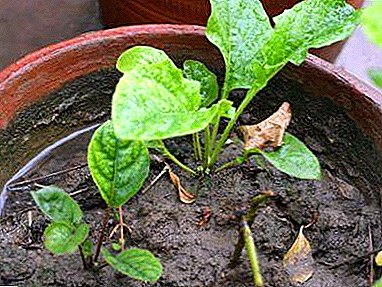 seeds (rarely);
seeds (rarely);- division of the bush;
- grafting.
Seeds are planted in the soil at the very beginning of spring, having covered with a minimum layer of soil, previously soaked for 3-4 hours.
Seeds can be planted not earlier than 6 months after harvest.after thorough drying.
After the first leaves appear on young plants, they are transplanted, carefully cutting off the tip of the main root.
Reproduction by division is often practiced when growing gerbera at home.
- The division is performed at the end of flowering, usually in summer.
- When dividing the gerbera, the top layer of soil is removed, the upper part of the exposed rhizome is carefully cut in two (it is most convenient to use a surgical scalpel).
- Both parts are left in the pot.
- It is recommended to sprinkle the cut with powdered coal (but just dry earth will do).
- After the appearance of new roots in plants, they are taken out and planted in different containers. Another way of breeding white beauty - cuttings.
- In the gerbera, a part of the stem with a leaf and a knot is cut off and placed in warm, moist soil.
- Within about one week, new shoots will appear, from which new “Transvaal daisies” will grow.
Conclusion
Gerberas are very beautiful and elegant flowers, fashionable, spectacular, flawless in their strict exquisite beauty. They are able to revive the interior of any room, bring notes of cheerfulness and optimism in everyday life. You can give a gerber to a person to whom you have a deep sincere respect and feeling of gratitude.


 seeds (rarely);
seeds (rarely);